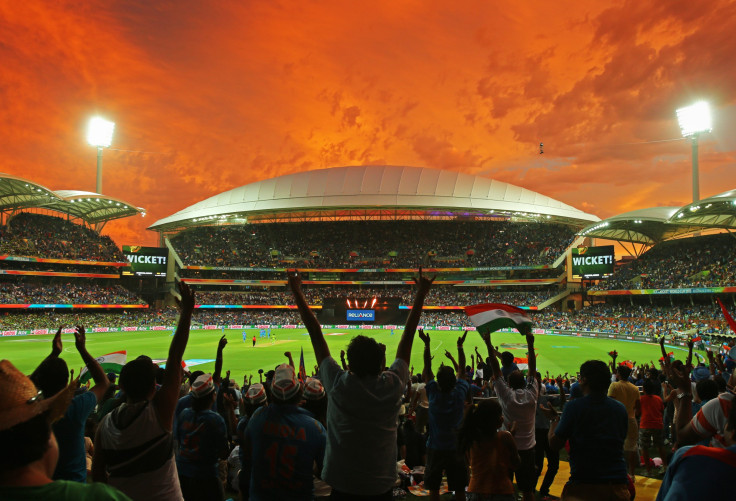Amazon And Facebook Are Treading Lightly In Live Sports

When the NFL regular season kicks off next month, the 100 million-plus Amazon (NASDAQ:AMZN) Prime members around the world will be able to stream Thursday-night games through Prime Instant Video. Next December, members in Britain will be able to stream the original version of football with 20 Premier League matches broadcast exclusively through Prime.
MLB fans started streaming weekday-afternoon baseball games on Facebook (NASDAQ:FB) this season after the company signed a deal for the rights to 25 games. Soccer fans get to watch 22 Major League Soccer games on Facebook. Most recently, Facebook acquired the rights to broadcast La Liga soccer in eight South Asian countries including India, Pakistan, and Sri Lanka.
This article originally appeared in The Motley Fool.
None of these deals are massive sports rights deals that make headlines or make executives at Disney's (NYSE:DIS) ESPN fear the end of days. In fact, both Amazon and Facebook have been reserved in the deals they go after, none of which cost more than eight figures. As an investor in both companies, that's exactly how I like it.
A Cautionary Tale
Live sports are one of the few reasons left for tuning in to TV; sports are best enjoyed in the moment. As such, sports broadcasters pull in huge amounts of advertising revenue and command high prices from distributors. ESPN has the highest affiliate fee of any cable network for this reason.
But even live sports has limitations. Sports fans are a relatively small portion of pay-TV subscribers as has been made clear by ESPN's subscriber losses resulting from households moving toward more affordable skinny bundles or cutting the cord altogether. ESPN subscribers dropped 11% from fiscal 2013 to fiscal 2017, a decline of 11 million subscribers over the period. Further, the network reported a decline in advertising revenue in the most recent quarter.
Meanwhile, ESPN's content commitments continue to pile up. The company signed several massive multiyear contracts, and it spends more on content than anyone else in television. Sports leagues know their content is valuable, and broadcasters are often paying through the nose because of it.
A Big Factor Working Against Digital Sports Broadcasting
ESPN has been able to offset its subscriber losses through built-in price increases in its existing contracts with distributors. Although ESPN lost 11% of its subscribers over four years, the price cable companies pay ESPN per subscriber has gone up by much more.
Amazon and Facebook don't have that kind of deal. Amazon subsidizes its content investments with Prime subscription revenue, but that revenue also has to pay for shipping expenses, streaming music rights, free Kindle books, and a bevy of other benefits for Prime members. Facebook is relying entirely on advertising revenue to monetize games.
While Amazon and Facebook have two of the best digital advertising businesses around, it's still unclear whether they'll recoup their investments in sports rights. It's unclear whether Amazon's first year of Thursday Night Football was profitable. Facebook wouldn't bid more than $600 million on the India Premier League cricket rights, a package that the winning bidder paid $2.55 billion for. That's because Facebook doesn't have a TV network and subscriber affiliate fees to fall back on.
Sports As A Loss Leader
Unlike ESPN, Amazon and Facebook are in a position to use sports as a loss leader -- to get people in the door, so to speak. Amazon wants more people to sign up for Prime, so dangling Thursday Night Football or conveniently timed December Premier League matches (Christmas shopping after the game!) in front of prospective consumers can help spur more Prime sales. Once they experience Prime, new members might never want to go back.
Facebook is still working to get its Facebook Watch platform into the mainstream. Sports could play a role in that transition. Users who come to Watch for exclusive sporting events might stay after discovering other content on Watch.
Facebook's efforts in India are particularly noteworthy. Facebook's user monetization in the Asia-Pacific region has lagged other regions in recent years, as it's focused more on attracting new users than on monetization. Engagement also might not be as high due to poor connectivity in some subregions. Its La Liga deal, which was less expensive than the previous rights holder paid, could jump-start engagement and advertising spending in the region and help Asia-Pacific revenue per user growth catch up with other regions.
Even though Amazon and Facebook have the cash available to spend hundreds of millions of dollars in one go on sports rights, this more reserved experimentation with sports is important, especially without subscription revenues to fall back on. But if the companies can break even on live sports rights, it could draw deeper engagement in other parts of the business for both.
John Mackey, CEO of Whole Foods Market, an Amazon subsidiary, is a member of The Motley Fool's board of directors. Adam Levy owns shares of Amazon and Facebook. The Motley Fool owns shares of and recommends Amazon, Facebook, and Walt Disney. The Motley Fool has a disclosure policy.




















